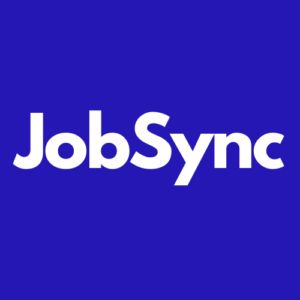
In part 1 of our roundtable wrap up of the final discussion of 2022, we covered the three job markets that our guest Brian Fink predicted will be the biggest market areas that all recruitment pundits eyes will be on. But, while talking about these markets we discussed that the biggest area of focus for recruiters is going to remain squarely on candidate experience. Combining Brian’s insights with some of our own, the following is the rest of our deep dive into what’s about to come as we walk into 2023.
Candidate expectations will continue to rise, regardless of the broader economic trends.
Candidates are unreasonable people. Not because they are actually unreasonable, but because they are not professional candidates. Few understand the challenges on the other side as recruiters. And none understand that there are times that hundreds of candidates, many unqualified, have replied (applied) to the same job req, even while they are applying to hundreds of roles. What they are sure of is that the process is clunky, communication spotty and the AI is definitely screening them out.
Whether they are right, wrong, or somewhere in between, the opportunity for success as recruiters boils down to three things: expectations, communication, and automation.
Expectations
Expectations vary broadly across industries, generations, genders, roles and the list goes on. The old thinking was that companies set expectations early and often – the reality is not about setting expectations as that assumes a power dynamic with the employer having all the power, but actually understanding your candidate’s expectations, and aligning to those as much as is reasonable.
2023 Prediction 5: Recruiters are going to be forced into asking upfront ‘what are your expectations for timing, for communication and what else is competing for your attention?’ While recruiters still may try to ‘set expectations’, the tables have actually turned to force recruiters to adapt to changing expectations – if the candidate is worth it, companies will have to adapt.
Communication
The only way to have a chance to match expectations is through frequent and flexible communication. You must be willing to meet your candidates where they are at – be that with phone calls, email or text messaging, and most likely a mix of all of those.
The only way recruiters, with smaller budgets and less support, are going to survive is by hiring faster – that means responding to candidates faster and in ways that allow the candidate to be equally responsive.
Email is not fast.
Between job board generated email addresses to Gmail’s classification of automated emails into promotions or updates, email updates are lost in the sea of junk email.
Text messaging is instant.
Messaging candidates within minutes thanking them for the application, and updating that they did (or didn’t) make the first cut is a simple way to shorten the hiring time frame. For some roles, passing the first hurdle may also mean making it to an interview, and text message enabled automated interview scheduling really compresses time to hire.
2023 Prediction 6: Companies are going to further lean into text messaging and automated interview scheduling, removing days of wasted time in their process.
Automation
Leveraging automation in this way – where candidates do not yet expect personalization, but do expect immediacy, gets many candidates over the first hurdle, but also gets your
business ahead of your competition for that candidate.
Automate what does not need to be manual, especially in the light of the potential of less resources and less budget. But in reality, you should aim to automate what is both unnecessary to be manual and in areas that are highly inefficient. Taking a critical look at your recruiting process, are you getting enough quality candidates to minimize the need for outbound sourcing? Are you losing candidates before you even know who they are? Or do you know who they are, but the lift to make the ‘official’ candidate too great? Do you have application completion rates for applications closer to 5% when you really need it to be 20%?
Why not explore automation that integrates your full application process into your candidate sources? Why not capture text consent at the beginning of your process and automate next steps and scheduling through the mobile device?
Sourcing shouldn’t be as necessary as it has been. The majority of companies relying on sourcing today is because recruitment marketing and conversion has failed them. Some ATS integrate the jobs into Easy Apply to drive more volume, but at the expense of quality. Other ATS’s have gone the distance to transform the Easy Apply button into a full application experience, and yet other ATS’s provide access to middle-ware technology like JobSync to integrate the full application into the Easy Apply experience on the client;s behalf. Regardless of how you approach it, the results are stunning, 2x-5x more completed applications – no additional budget, and less reliance on sourcing and staffing firm resources.
Automation has the opportunity to improve many places in the recruitment funnel. For example, first level communication doesn’t need to be manual. It also doesn’t need to be a phone call or a personalized and hand-typed email. ‘Thanks but no thanks’ especially on the first level of screening, should be automated and it should be via the communication preference of your candidate, not the preference of the recruiter.
2023 Prediction 7: The companies that lean into automation where it has the most impact will thrive in a resource constrained world. Technology shouldn’t replace the essential one-on-one moments, but rather it should take away the parts of the process that unnecessarily slow the process to hire.
The price of talent is going up…across the board.
January first 2023 is a magical day – 23 states just increased their minimum wage, with an estimated 8.4 million workers impacted and $5 Billion in pay boosts per the Economic Policy Institute. In addition, 15 states, representing more than 40% of the overall working population have rolled out pay transparency laws, each with their own nuances, enforcement and fines.
While small single state on-premise businesses will most likely find compliance easy, and risk mitigation something that can be tackled on a job-by-job basis, large national organizations, or those hiring remote – will need to comply with all of the state requirements. But it’s not just that, if you want access to certain job sites, companies will also need to comply with those sites policies. That means not only including a salary range, it needs to include a reasonable salary range. No $1.00 – $2,000,000.00 ranges.
For many, it’s the first time that current employees will know if they are making less than the new hires. And if they are, companies need to proactively adjust their current employees salaries or prepare for lawsuits (is it the female, BIPOC or LGBTQ employees who are on the low end?) or watch their current employees walk. The saying ‘Employees don’t leave bad companies, they leave bad bosses’ may no longer ring true – money talks, and employees are going to walk.
2023 Prediction 8: Talent is going to be much more expensive. Companies will be forced to reckon with either paying more for their current employees or losing them, with their institutional knowledge, to pay more for new employees. This, in turn, increases the burden on the talent teams, which has a knock-on effect of impacting the candidate experience.
The candidate experience problem has not yet been solved.
Candidate Experience is going to continue to evolve dramatically – but not necessarily in all good ways. As the candidate market dried up and companies sought any advantage, candidate experience became the talisman of every organization – but as the news cycles continue with layoffs and more available talent – companies forward progression on candidate experience will pause, and more likely, slide backwards as old habits slip in to ‘help’ the recruiter experience.
Extraordinarily long applications, weeks for initial responses, months to get to offer – the hallmarks of an understaffed recruiting function, overlaid with historical behaviors that save recruiter time (which often has the opposite effect on candidate time).
Companies will either use this market as an opportunity – buck their instincts and drive better and better candidate experiences or fall victim to their own worst instincts. The winners and losers will be clear.
2023 Prediction 9: Candidate experience is in for a bumpy ride in 2023. Companies are going to ask more of candidates initially, with a turn away from candidate leads, and an increased drive towards completed (lengthy) applications.
2023 Outlook: The market is going to continue to operate in unexpected ways – while the news and focus is on the big tech companies, the crypto market and the over extended start-ups, the majority of the market isn’t any of those companies. The US market runs on companies where the deskless workers are the majority of the workers, the hourly positions where we continue to see worker shortages to the tune of millions of open positions, with still 1.7 open jobs to every available worker. Companies where the pay scales have long been transparent and where candidate experience has been synonymous with speed.
The only thing that remains to be seen is which companies overreact to the market news, which companies are able to invest through the chaos, who keeps a clean line of sight on the goal and who gets swept up in the energy of the market.


